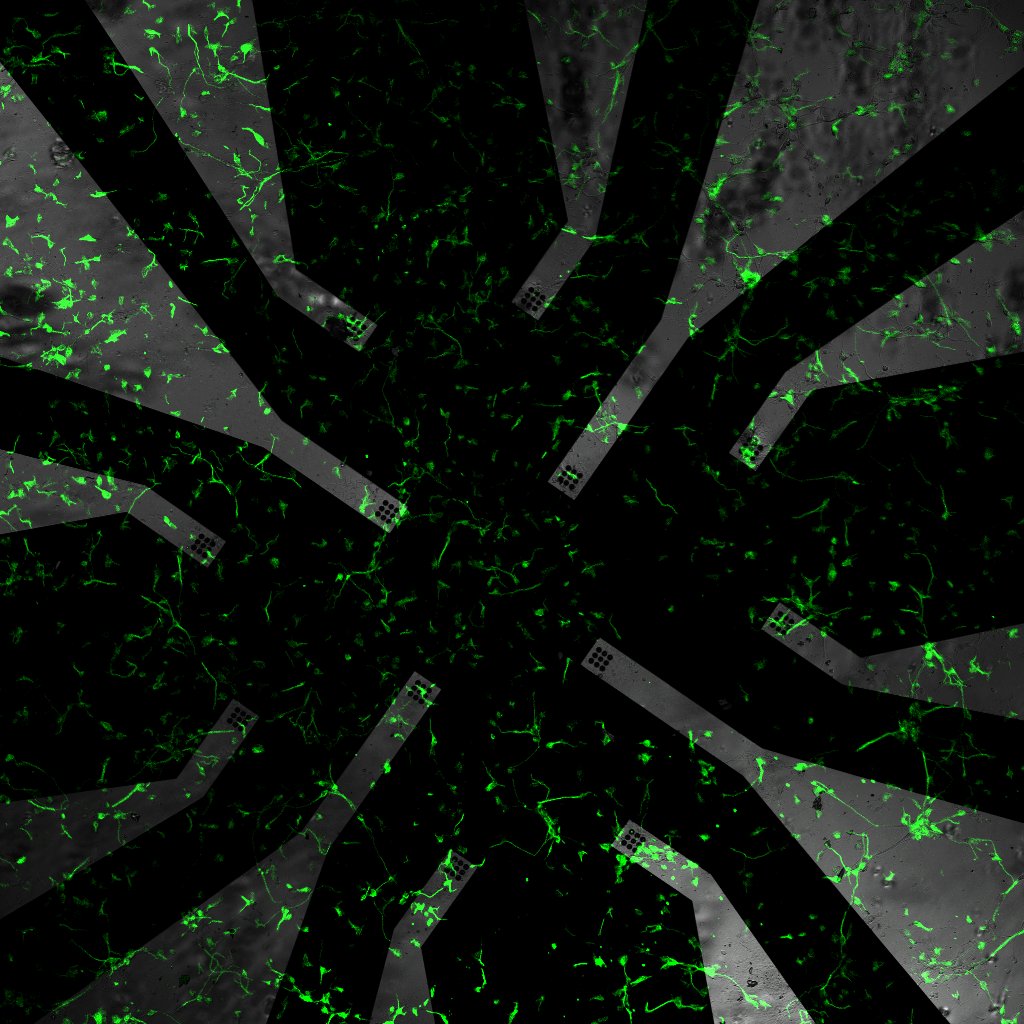Neuroengineering and Computational Neuroscience
ABOUT
Neurons are Nature’s solution to fast and reliable information processing, and many neuroscience challenges can only be tackled by acknowledging this fact.
We are a multidisciplinary group focused on neuronal computation and neuronal circuits’ dynamics: the lab makes extensive use of electrophysiology methods (particularly microelectrode arrays), functional imaging and microfluidics, to improve our understanding on how neurons encode, transmit, store and process information.
Together with expertise in machine learning and in silico neuroscience tools (e.g. modeling, advanced signal/image analysis and computer simulations), we also use and develop neuroengineering approaches (e.g. neuro-electronic interfaces) that help us reveal, and repair, neural function.
RESEARCH
Both neurobiology fundamental research and neuroengineering technological innovation are carried out in our group.
We use well-controlled in vitro/ex vivo systems, where with can monitor and modulate neural activity with high spatiotemporal resolution, to uncover and analyze the properties of neuronal circuits in either physiological or altered conditions. With our methodologies, we have been able to develop and validate novel microelectrodes technologies and show, for example, that bidirectional signal conduction is present in axons in neuronal cultures. We also use our combination of microelectrode arrays and microfluidics to characterize electrical communication between neuronal populations, and the effect of neuronal activity in axonal transport dynamics.
Through strong connections to the clinic, we also work with electrophysiology recordings from human patients implanted with microelectrode arrays. Research is carried out in the context of epilepsy (e.g. detection of epileptogenic regions), as well as with deep brain stimulation in patients with Parkinson’s disease (e.g. developing methods towards adaptive neuromodulation).
A long-term goal of the NCN group is the development of microelectrodes systems and other neurotechnologies for therapeutic strategies based on the control and modulation of neural electrophysiology (closed-loop neuromodulation).

Team
Selected Publications
Disrupting abnormal neuronal oscillations with adaptive delayed feedback control. eLife13:, 2024. [Journal: Article] [IF: 6.4 (*)]
DOI: 10.7554/eLife.89151 SCOPUS: 85190939220
Mateus J.C., Sousa M.M., Burrone J.
Beyond a Transmission Cable—New Technologies to Reveal the Richness in Axonal Electrophysiology. Journal of Neuroscience44(11):, 2024. [Journal: Article] [CI: 10] [IF: 4]
DOI: 10.1523/JNEUROSCI.1446-23.2023 SCOPUS: 85187697885
Oliveira A.M., Carvalho E., Barros B., Soares C., Ferreira-Pinto M.J., Vaz R.
DBScope as a versatile computational toolbox for the visualization and analysis of sensing data from deep brain stimulation. npj Parkinson's Disease10(1):, 2024. [Journal: Article] [CI: 1] [IF: 6.7 (*)]
DOI: 10.1038/s41531-024-00740-z SCOPUS: 85198638602
Manubens-Gil L., Zhou Z., Chen H., Ramanathan A., Liu X., Liu Y., Bria A., Gillette T., Ruan Z., Yang J., Radojević M., Zhao T., Cheng L., Qu L., Liu S., Bouchard K.E., Gu L., Cai W., Ji S., Roysam B., Wang C.W., Yu H., Sironi A., Iascone D.M., Bas E., Conde-Sousa E., Aguiar P., Li X., Li Y., Nanda S., Wang Y., Muresan L., Fua P., Ye B., He H.y., Staiger J.F., Peter M., Cox D.N., Simonneau M., Oberlaender M., Jefferis G., Ito K., Gonzalez-Bellido P., Kim J., Rubel E., Cline H.T., Zeng H., Nern A., Chiang A.S., Yao J., Roskams J., Livesey R., Stevens J., Liu T., Dang C., Guo Y., Zhong N., Tourassi G., Hill S., Hawrylycz M., Koch C., Meijering E., Ascoli G.A., Peng H.
BigNeuron: a resource to benchmark and predict performance of algorithms for automated tracing of neurons in light microscopy datasets. Nature Methods20(6):824-835, 2023. [Journal: Article] [CI: 34] [IF: 36.1]
DOI: 10.1038/s41592-023-01848-5 SCOPUS: 85153062588
Oliveira A.M., Coelho L., Carvalho E., Ferreira-Pinto M.J., Vaz R.
Machine learning for adaptive deep brain stimulation in Parkinson’s disease: closing the loop. Journal of Neurology270(11):5313-5326, 2023. [Journal: Review] [CI: 43] [IF: 4.8]
DOI: 10.1007/s00415-023-11873-1 SCOPUS: 85166426864
Girardin S., Clément B., Ihle S.J., Weaver S., Petr J.B., Mateus J.C., Duru J., Krubner M., Forró C., Ruff T., Fruh I., Müller M., Vörös J.
Topologically controlled circuits of human iPSC-derived neurons for electrophysiology recordings. Lab on a Chip22(7):1386-1403, 2022. [Journal: Article] [CI: 24] [IF: 6,1]
DOI: 10.1039/d1lc01110c SCOPUS: 85127217072
Mateus J.C., Weaver S., Van Swaay D., Renz A.F., Hengsteler J., Vörös J.
Nanoscale Patterning of in Vitro Neuronal Circuits. ACS Nano16(4):5731-5742, 2022. [Journal: Article] [CI: 13] [IF: 17,1]
DOI: 10.1021/acsnano.1c10750 SCOPUS: 85129103498
Dias C., Castro D., Aroso M., Ventura J., Aguiar P.
Memristor-Based Neuromodulation Device for Real-Time Monitoring and Adaptive Control of Neuronal Populations. ACS Applied Electronic Materials4(5):2380-2387, 2022. [Journal: Article] [CI: 24] [IF: 4,7]
DOI: 10.1021/acsaelm.2c00198 SCOPUS: 85130149541
Simões R.V., Henriques R.N., Cardoso B.M., Fernandes F.F., Shemesh N.
Glucose fluxes in glycolytic and oxidative pathways detected in vivo by deuterium magnetic resonance spectroscopy reflect proliferation in mouse glioblastoma. NeuroImage: Clinical33:, 2022. [Journal: Article] [CI: 20] [IF: 4,2]
DOI: 10.1016/j.nicl.2021.102932 SCOPUS: 85123426654
Teixeira H., Dias C., Aguiar P., Ventura J.
Gold-Mushroom Microelectrode Arrays and the Quest for Intracellular-Like Recordings: Perspectives and Outlooks. Advanced Materials Technologies6(2):, 2021. [Journal: Review] [CI: 22] [IF: 8,9]
DOI: 10.1002/admt.202000770 SCOPUS: 85097519751
Polónia A., Campelos S., Ribeiro A., Aymore I., Pinto D., Biskup-Fruzynska M., Veiga R.S., Canas-Marques R., Aresta G., Araújo T., Campilho A., Kwok S., Aguiar P., Eloy C.
Artificial Intelligence Improves the Accuracy in Histologic Classification of Breast Lesions. American Journal of Clinical Pathology155(4):527-536, 2021. [Journal: Article] [CI: 22] [IF: 5,4]
DOI: 10.1093/ajcp/aqaa151 SCOPUS: 85102964948
Mateus J.C., Lopes C.D.F., Aroso M., Costa A.R., Gerós A., Meneses J., Faria P., Neto E., Lamghari M., Sousa M.M., Aguiar P.
Bidirectional flow of action potentials in axons drives activity dynamics in neuronal cultures. Journal of Neural Engineering18(6):, 2021. [Journal: Article] [CI: 11] [IF: 5]
DOI: 10.1088/1741-2552/ac41db SCOPUS: 85122868659
Gerós A., Magalhães A., Aguiar P.
Improved 3D tracking and automated classification of rodents’ behavioral activity using depth-sensing cameras. Behavior Research Methods52(5):2156-2167, 2020. [Journal: Article] [CI: 19] [IF: 6,2]
DOI: 10.3758/s13428-020-01381-9 SCOPUS: 85083094268
Castro D., Nunes V., Lima J.T., Ferreira J.G., Aguiar P.
Trackosome: a computational toolbox to study the spatiotemporal dynamics of centrosomes, nuclear envelope and cellular membrane. Journal of Cell Science133(24):, 2020. [Journal: Article] [CI: 3] [IF: 5,3]
DOI: 10.1242/jcs.252254 SCOPUS: 85099992997
Costa A.R., Sousa S.C., Pinto-Costa R., Mateus J.C., Lopes C.D.F., Costa A.C., Rosa D., Machado D., Pajuelo L., Wang X., Zhou F.Q., Pereira A.J., Sampaio P., Rubinstein B.Y., Pinto I.M., Lampe M., Aguiar P., Sousa M.M.
The membrane periodic skeleton is an actomyosin network that regulates axonal diameter and conduction. eLife9:, 2020. [Journal: Article] [CI: 57] [IF: 8,1]
DOI: 10.7554/eLife.55471 SCOPUS: 85082635132
Heiney K., Mateus J.C., Lopes C.D.F., Neto E., Lamghari M., Aguiar P.
µSpikeHunter: An advanced computational tool for the analysis of neuronal communication and action potential propagation in microfluidic platforms. Scientific Reports9(1):, 2019. [Journal: Article] [CI: 7] [IF: 4]
DOI: 10.1038/s41598-019-42148-3 SCOPUS: 85064068131
Mateus J.C., Lopes C.D.F., Cerquido M., Leitão L., Leitão D., Cardoso S., Ventura J., Aguiar P.
Improved in vitro electrophysiology using 3D-structured microelectrode arrays with a micro-mushrooms islets architecture capable of promoting topotaxis. Journal of Neural Engineering16(3):, 2019. [Journal: Article] [CI: 13] [IF: 4,1]
DOI: 10.1088/1741-2552/ab0b86 SCOPUS: 85065810756
Aresta G., Araújo T., Kwok S., Chennamsetty S.S., Safwan M., Alex V., Marami B., Prastawa M., Chan M., Donovan M., Fernandez G., Zeineh J., Kohl M., Walz C., Ludwig F., Braunewell S., Baust M., Vu Q.D., To M.N.N., Kim E., Kwak J.T., Galal S., Sanchez-Freire V., Brancati N., Frucci M., Riccio D., Wang Y., Sun L., Ma K., Fang J., Kone I., Boulmane L., Campilho A., Eloy C., Polónia A., Aguiar P.
BACH: Grand challenge on breast cancer histology images. Medical Image Analysis56:122-139, 2019. [Journal: Article] [CI: 524] [IF: 11,1]
DOI: 10.1016/j.media.2019.05.010 SCOPUS: 85067343074

